Disaster Readiness and Relief
Rescue on the rocks of Catalina
November 18, 2009
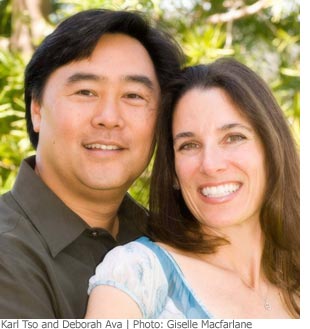 As they walked up the hill overlooking the ocean, the Topanga couple only wanted to test the ham radios they’d been trained to use in a disaster.
As they walked up the hill overlooking the ocean, the Topanga couple only wanted to test the ham radios they’d been trained to use in a disaster.
Instead, Karl Tso and Deborah Ava ran into a real-life emergency on Catalina. Their quick work one night late last month helped save the life of a man who was half-conscious and bleeding at the rocky bottom of a 35-foot cliff.
By spotting the man and rushing to alert authorities, Tso and Ava set in motion a rescue operation that included the county’s Baywatch paramedics and an airlift to a mainland hospital in a county Fire Department helicopter. At a board meeting early next month, Supervisor Zev Yaroslavsky will be presenting Tso and Ava with a commendation. “Karl Tso and Deborah Ava exemplify how dedicated volunteers can empower themselves to help others in times of emergency, and even save lives,” the supervisor said in his citation.
Tso and Ava had traveled to the Camp Emerald Bay Boy Scout camp for an overnight trip with their two Cub Scout sons on October 23. At 9:30 p.m., as their boys played with counselors and fellow scouts, the couple took a walk up a hillside above Doctor’s Cove. It was high enough, Tso figured, to test out the two-way radios on which they’d been trained to coordinate community disaster efforts with the volunteer Topanga Coalition for Emergency Preparedness. The ham, or amateur, radio operators can continue to keep neighbors informed and connected even when cell and other phone services go down. “In a disaster, that’s critical,” notes Tso, who obtained his ham license last spring.
Part way up the hill, Ava says she heard an “eerie moaning sound” below. Tso shined a powerful police flashlight along the water’s edge, where he saw the injured man sprawled across the jagged boulders.
He’d evidently slipped from the same trail they were on. “The way he was laying there, I thought he’d broken his spine,” Tso says. Tso and Ava yelled to him. “We couldn’t tell whether he could hear us at all,” Tso recalls.
The couple ran back down the trail and alerted counselors to phone 911. Then they returned to the vantage point above the man, later identified as Peter Conn, 59, who’d also come to Emerald Bay with his son for the Cub Scout weekend.
Counselors and parents came to assist, but for a time it was unclear to Tso whether the 911 call was successful. So, using his ham radio, Tso sent out an emergency message for anyone on the mainland, more than 20 miles away. He reached L.A. Sheriff’s Sergeant Scott Bastian, a ham radio enthusiast who was driving home to Fullerton after finishing his shift at the Men’s Central Jail in downtown L.A. Bastian quickly phoned the Sheriff’s Radio Center and confirmed for Tso that “Baywatch as well as Sheriff’s Rescue was on the way.”
When the Baywatch boat arrived, paramedic Joel Gitelson swam ashore and, with the help of camp counselors who’d made their way to the injured man, immobilized Conn on a “back board” to prevent further injury. Gitelson then rowed Conn from the beach to the waiting rescue boat, Isthmus, in a borrowed skiff.
On the cliff above, Tso was happy to hear Conn complain to paramedics that his leg hurt “because that meant he hadn’t severed his spine,” Tso recalled. The Isthmus took Conn to a shore-side heliport where a chopper crew airlifted him to St. Mary’s Hospital in Long Beach.Conn sustained a broken jaw and had swallowed teeth jarred loose in the fall. He also suffered multiple fractures of a hand, leg and hip. Last week, Conn was moved to a hospital closer to home, where he’s “making progress,” says Gail Conn, his wife and business partner in an interactive market-research firm.
The family is grateful for Tso’s and Ava’s quick thinking. “We owe them everything,” says Gail Conn, who says her husband could well have bled to death had he not been rescued quickly. “He was very lucky to be found when he was.”
For their part, Tso, who designs and builds homes, and Ava, a packaging designer at Mattel, found the experience a little “surreal.” But as Ava says, “It was thrilling that we were able to help the man.” In fact, they’d attended a disaster radio training session just two days before the outing. “It’s so ironic that we’d just been to the class,” Ava laughed. “And, then, boom, it all just worked.”
Malibu octogenarians get their goats—and safer homes
October 14, 2009
Just what was that herd of goats doing munching grass on the steep hillsides of Malibu’s Horizon Hills earlier this year? They were hired hooves.
Venturing easily to slopes too vertical for weed-whacking men to climb, the sure-footed grass-eaters were hired as part of a fire grant program engineered by an unlikely trio of retired 80-something neighbors in Horizon Hills. The men were determined to reduce the danger of a wind-driven brush fire devastating their 40-home neighborhood, tucked into the Santa Monica Mountains.The retirees—an Auschwitz survivor, a former Luftwaffe private and a World War II Army paratrooper—formed a “fire safe council,” a volunteer non-profit group dedicated to improving local fire readiness. They won nearly $120,000 in federal and state grants, using the funds to cut trees, trim bushes and even attack acres of grass with the voracious goats.
They set up their Horizon Hills group under the umbrella of the California Fire Safe Council, a clearinghouse for fire education and state and federal grants. Los Angeles County has 25 similar local organizations, according to L.A. County Fire Department Forester J. Lopez, who worked closely with the men in the Horizon Hills unit. “This is a great way to empower neighbors to solve their own fire issues,” says Lopez, who also serves as vice chair of the statewide group’s board.
The fire-conscious octogenarians made improbable allies.As a teen and Polish Jew, Herb Kolischer, now 85, had survived more than two years at Auschwitz before immigrating to California and launching a career as an architect.
Physicist Wolfgang Knauer, 83, twice conscripted in the German air force as a teen, worked for decades as a scientist at the Hughes Research Center. Knauer and Kolischer first became acquainted decades ago at neighborhood meetings. After initial wariness, Knauer says of their different backgrounds, “we put the past into the distant past.” They’ve been friends and ski buddies ever since.
The two men got on the fire safety bandwagon thanks to a third friend, Dr. Ernest Masler, 86. The retired psychiatrist, a U.S. Army paratrooper in World War II, became a fire crusader after his old Malibu residence burned down in the 1993 Topanga fire and he moved to Horizon Hills. Masler had spent a few years in a fruitless letter writing campaign urging federal land officials to reduce fire danger with controlled burns in the brushy federal parklands that surround the neighborhood on three sides.
Frustrated, the men decided that if they couldn’t change federal burn policies, they could effect change closer to home by reducing the danger of fires in their own neighborhood.
They formed the Horizon Hills fire safety council in 2005 and soon won a $52,000 grant to hire a tree trimming firm to reduce hazards near homes. “It’s relatively simple to set up, but you have to be persistent,” says Kolischer.
They were certainly persistent with their Horizon Hills neighbors, making house-to-house visits in an effort to persuade them to let tree trimmers lop off branches and remove whole trees. Their secret weapon was the Fire Department’s Lopez, a forester who provided technical expertise and proved a very good negotiator to boot, the men say.
“We did everything we could to persuade some neighbors we weren’t terrorists” for wanting to cut down their beloved trees, jokes Masler. In time, the trio won over most of their neighbors, a task made somewhat easier by the fact that the work would be paid for by the grants.
A $15,000 state grant helped bring in the grass-eating goats. The council won a second federal grant of $52,000 to cut back chaparral and more trees in 2008 and early 2009. The box score: 100 trees were cut down, another 100 were pruned and 15 acres of grass and brush were trimmed.
“We improved the situation a great deal,” says Knauer, “but there is more we need to do.”




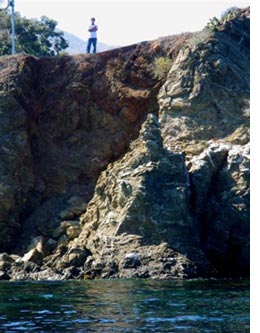
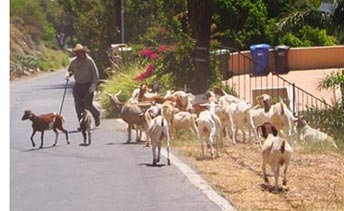
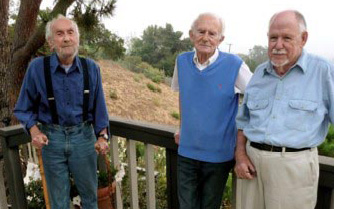
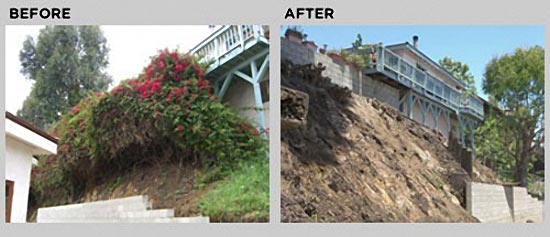







 405 bridge work causes a stink
405 bridge work causes a stink
